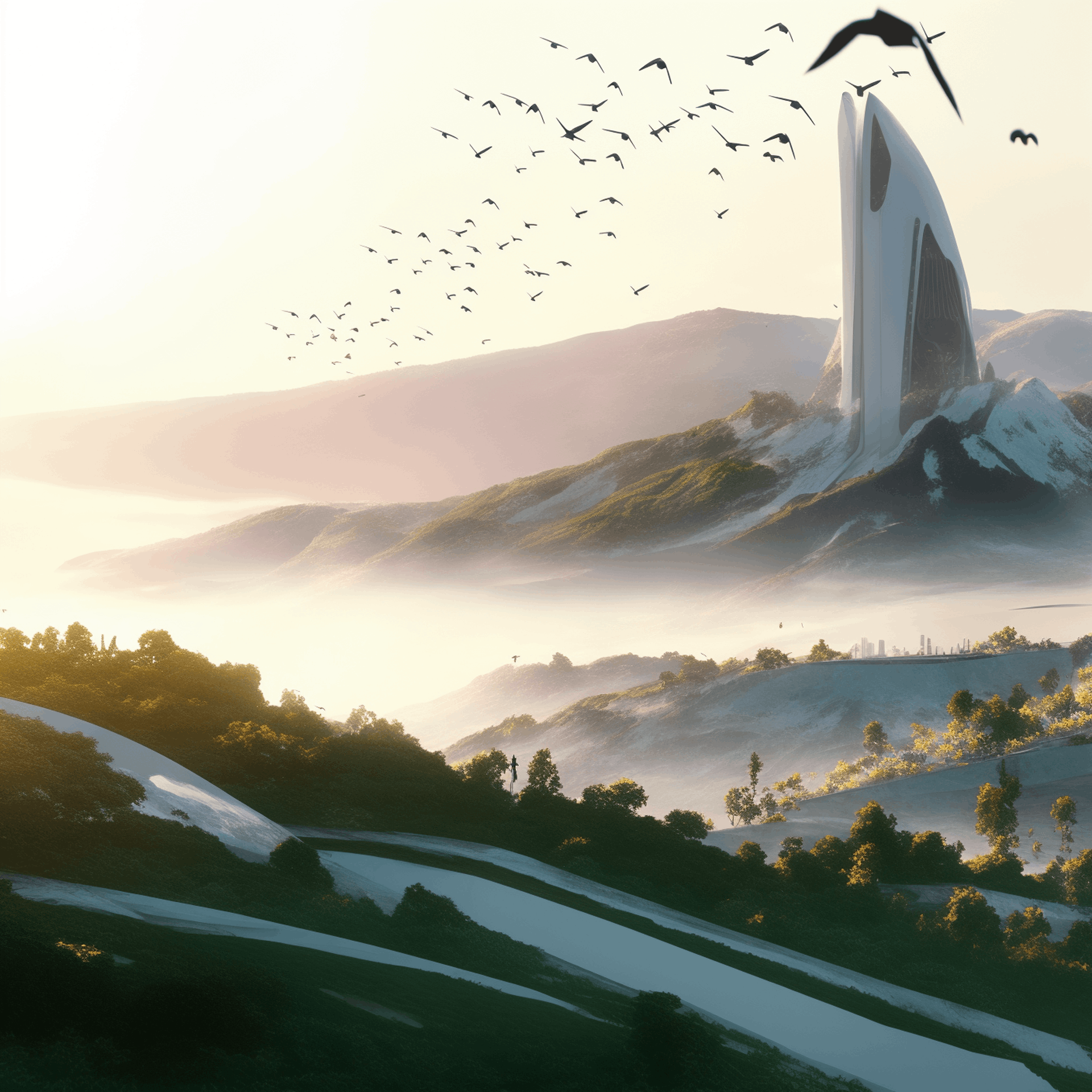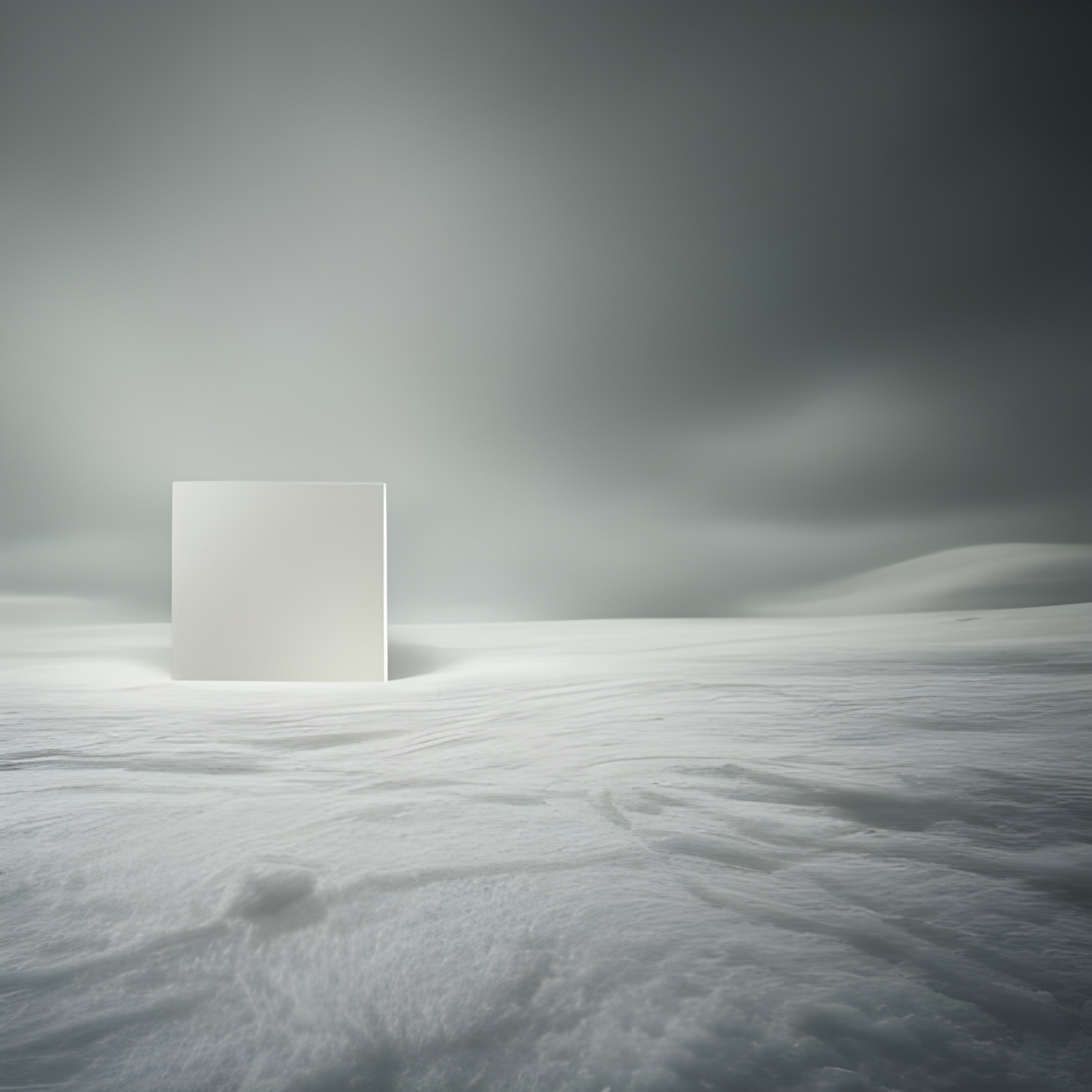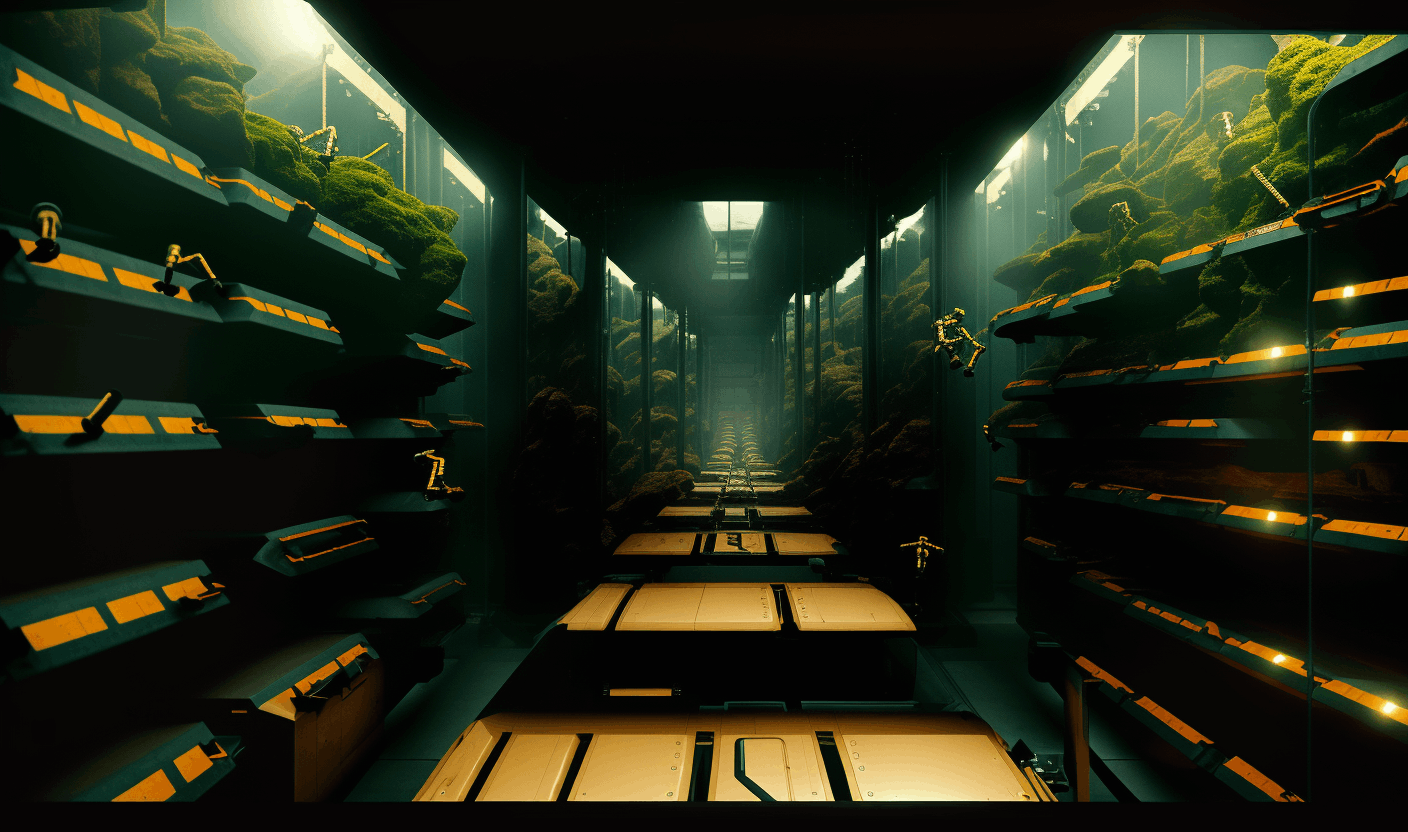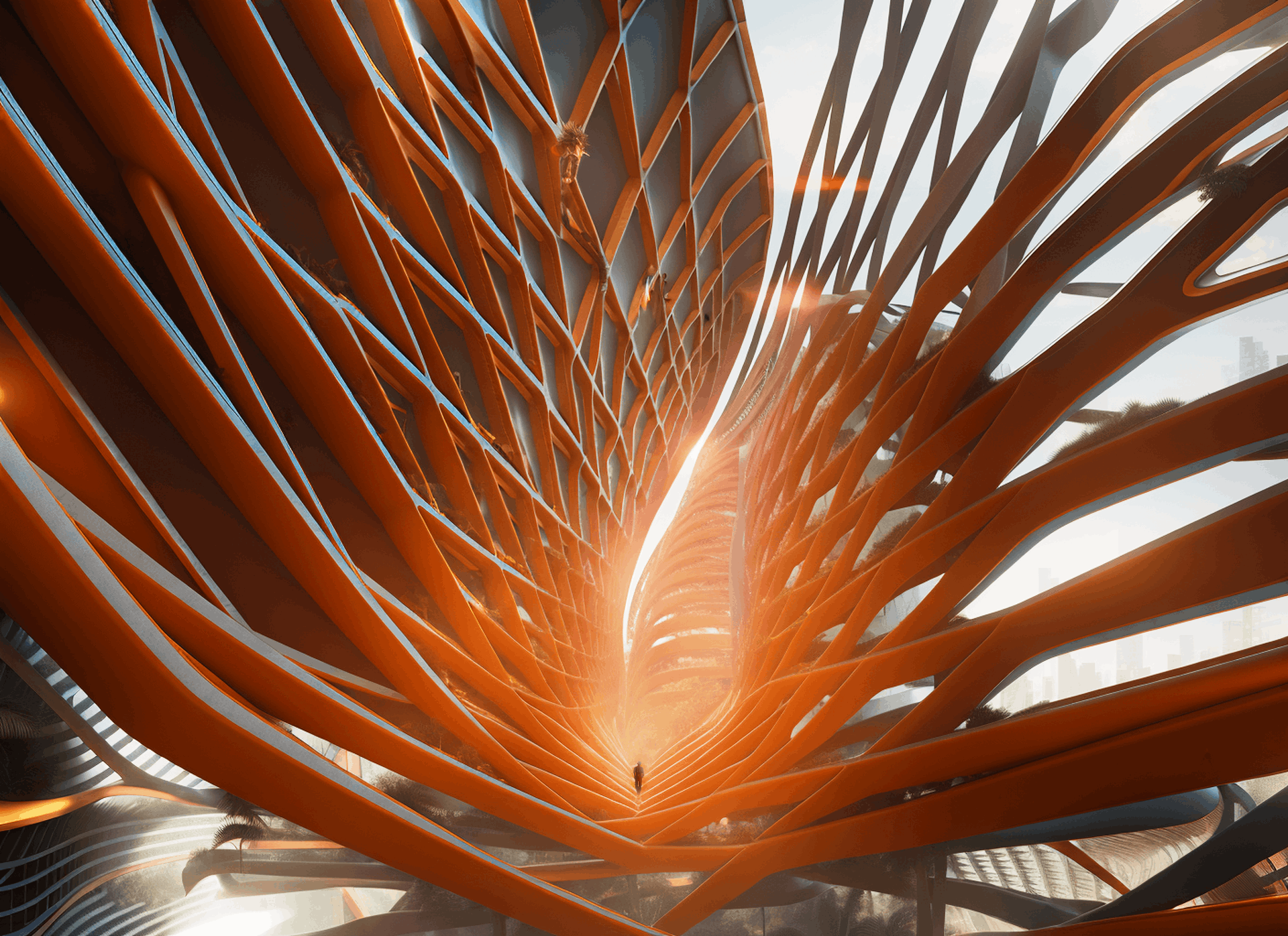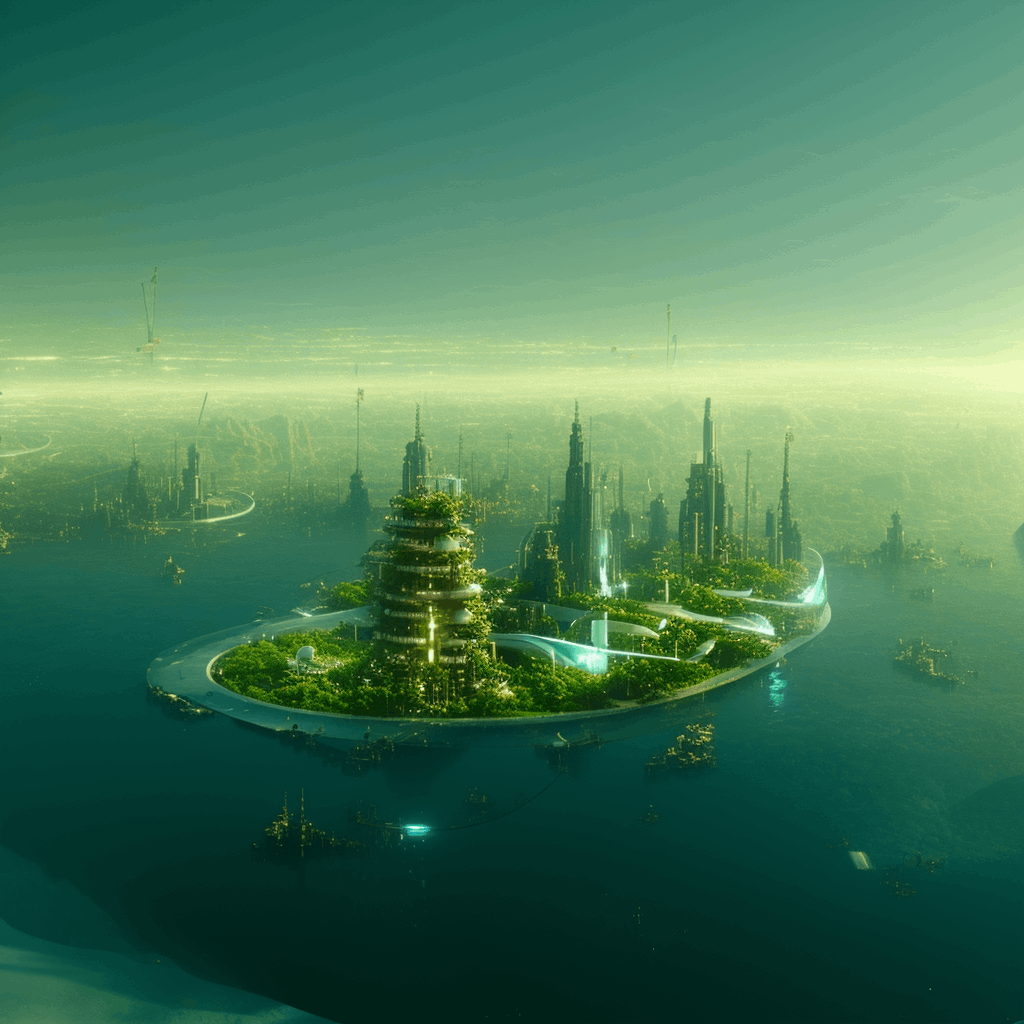Back
The Grid
Year: 2023
Category: Cultural Architecture
Skills: AI images
My goal with this work was to create an experience of using AI in an architect's creative process. The concept was of architecture possible in the next 200 years, so I created the concept of The Grid. The Grid is basically a virtual universe (like metaverse) where people, voluntarily, decided to abandon their physical lives to live in a virtual universe, where everything is customized and each person lives a reality that directly corresponds to what they most want, like a perfect world, or almost. At the same time, part of society decided to oppose this, isolating itself in self-sustaining cities, where people disconnected from technology and live like we did about 10 years ago. In this way, distributing themselves in a more sustainable way of life and in a way to face the problems and not run away from them. The idea of the Grid acts as an expanded simulacrum of our current reality, where what we see and what we don't see depends on algorithms , where the main selection factor is to make the user spend as much time as possible connected and thus collect data that is later sold. In such a way, it seems natural that in view of an imminent future in this scenario, some opposition to the status quo will arise. I represented it by using Ai images and 3D models in a 3D rendering in Lumion. The text is important to me, as I think I can express myself better by writing. By the same token, I really enjoyed creating images using the AI's because I can use my best form of communication to create images. For this project, I used several AI's such as Mid Journey, Dall-E 2, Stable Diffusion, Coherent (not used in this presentation here) and AI Image Enlarger, after that I polished the images in the Photoshop. At the end of the text, I tell my conclusion about the experience of using AI as a design tool. To carry out this work I used a technique of creating images in various artificial intelligences and then refining them with the Image to Image tool of Stable Diffusion, thus achieving much more realistic and detailed images. (I'm from Brazil so, I want to apologize for my english).
This image represents an idea that in the future will exist giants research centers that act just trying to reverse animal extinctions. The idea of the ark is that it was a kind of mountain building, which simulated the curves of the mountain, as well as the BIG project, Mountain Dwellings. In this way, uniting with the idea of a building designed by Zaha Hadid, the ark was born. Zaha Hadid is always a great reference in utopian universes, for its unique forms that express high technology. First, images were generated in Dall-e 2, later the chosen image was refined and augmented in Stable Diffusion Prompt: View from afar of a large 10-story, elongated technology building on top of a mountain designed by zaha hadid, with birds flying in the sky, soft lighting, adventurous, atmospheric lighting, 8k, octane render, by makoto shinkai, stanley artgerm lau, wlop, rossdraws, james jean, andrei riabovitchev, marc simonetti, krenz cushart, sakimichan, d&d, trending on artstation, digital art, by shigeru ban, by kengo kuma, by zaha hadid, sci-fi, unreal engine, city with oval shape, sharp focus, awesome sunny day, cg society, cinematic, hanging gardens, 8k, imax, cyberpunk. Image generated by AI Dall-E 2.
In this future I imagined, part of the world population would live in giant cubes like this one. In these cubes there are about 2 million people living in a virtual reality, inside capsules. The idea of the cube was to literally clash with the surroundings, even though it had the same color as the surroundings. The idea of making a cube basically consists of making the most of space. The cube, as a basic form, refers to the aesthetic minimalism of a future functionalist, as it is presented in concepts of modernism, but in this case, taken to the extreme. The AI placed the cube on a big white plateau, but for the video, I thought it looked more interesting with small mountainous elevations, even though it's not as realistic, being at the North Pole. Prompt: Giant and white perfect cube made of white metal seen from afar in the middle of the North Pole during a blizzard, landscape, cinematic view, epic sky, detailed, concept art, low angle, high detail, warm lighting, volumetric, godrays, vivid, beautiful, trending on artstation.Image generated by AI Stable Diffusion.
The interior of the cube has a very simple idea, several coffins stacked in endless corridors, occupying as little space as possible. The idea comes from the capsules of the well-known Kisho Kurokawa, from the metabolist movement. The idea that people can have more affordable housing if they occupy less space seems to be relevant, given the context. Since the space needed in real life is minimal, you can place more people having access to the same metabolic system, which enables access to the virtual world. Prompt: Center view of dark room with endless shelves of death pods with robots checking each bed, mist falling from each pod, claustrophobic, cinematic, volumetric light, high detail, golden ratio, hyperrealistic, infinite height, infinite depth, endless , agony. Image generated by AI MidJourney.
The New Earth was the part where artificial intelligence made the most difference in the creative process, I really didn't have much idea what I wanted. One of the few things I was sure of was the idea of a multiversal web and human smallness. The idea of the orange web came up with a purely aesthetic purpose, doesn't have any very deep meaning, other than a reference to the C.L.U. In this, the AI surprised me a lot, creating a kind of valley in a building in the shape of a giant contorted wave. In the empty spaces, it created different worlds, like floors of an infinite building. Prompt: A 500-story zaha hadid-style building that breaks the laws of physics and reality by intersecting it in itself, made of orange spider web blocks going in one side and out the other, forming an infinite loop in the middle of the building. outer space with a very small person in front of him looking down. Image generated by AI Dall-E 2.
In this future I envisioned, part of society refuses to live in virtual reality, retreating to cities like New Tokyo. In this sense, a city in the shape of an egg was thought and that lived in balance in itself. This one was definitely the hardest to get to where I wanted it (noticed by having 100 images in the carousel in the website). In trying to make this city, I found that the AI has a hard time generating images of extremely specific things. I had made a very well-defined outline of sectorization for the city. The idea was that it had an ovoid shape and that inside it, a drawing of an embryo (because those who live in the maternal box stay in coffins = death and in the real city in an egg = life). Despite everything, I managed to generate images that resembled what I wanted a lot, even more than 3D. I found it to be VERY cumbersome to render an entire city). I even modeled the interior of the buildings, but it was impossible to render hundreds of buildings at this level of detail. AT took many inspirations from greenpunk and solarpunk concepts. Prompt: Architectural concept of a futuristic cyberpunk greenpunk city seen from above is egg shaped in the middle of the ocean with wooden buildings on the sides in the feudal japanese style with Chinese pagodas that grow in number of floors the closer they get to the edges with a forest in the middle, high detailed, 8k, 4k , ultrarealistic. Image generated by AI Mid Journey. Conclusion: Using artificial intelligence as design tools can be very useful, but it is not easy. Even if the AI creates a shape that's what you wanted, you still have to figure out how to turn that into a real design and how to turn that into technical material. I believe that in the future it will become more and more common for artificial intelligence to be part of the creative process of all professionals who work with art and creativity.
Matheus Rudo Antoniassi Pereira de Oliveira
More by Matheus Rudo Antoniassi Pereira de Oliveira
View profile